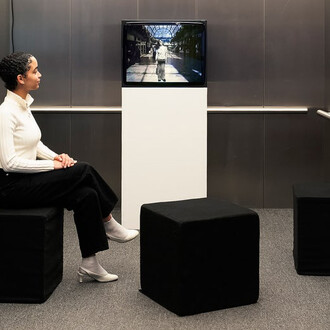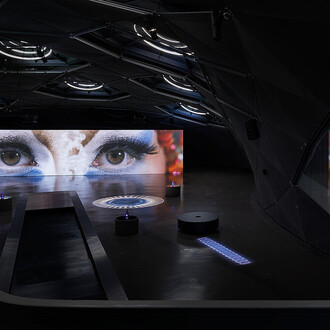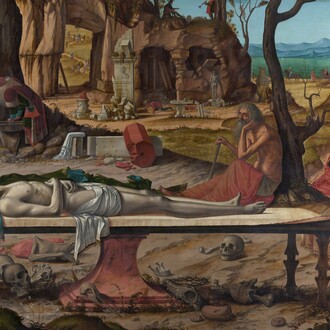The route to becoming an artist is never straightforward. How did you become a painter?
In fact it was surprisingly simple. I always painted as a boy and when, in my mid twenties, I met my first picture dealer, Percy Barkes, I asked him how to become a painter. He said “Well you already are. You paint, so you’re a painter.” It’s amazing what one clever comment can do for a young person.
You paint ‘en plein air’, how important to you is it to record your subject matter so directly?
This is a tricky one for me because there are many very fine painters who work from photos and there are many ways of making a painting, and frankly why should it matter how it’s made? I like to see the world and respond to the world, not see a photo and respond to a photo. If you look you will see the same model appearing in many of these paintings, but I like that concession. If I need a figure at a bar and I haven’t got it right, I ring up my model, Lara, and she sits for the figure. This is not new - if you look at El Greco paintings for example, you see the same man appearing again and again even within the same painting. I like that. In the end the vitality is greater if I am there working from a person rather than if I am not. And what would you find more satisfying to look at, a portrait of Ian Hislop or a painting of a photograph of Ian Hislop?
There are figures moving throughout your paintings in this exhibition, are your paintings more about the place or the people?
Clearly both, but increasingly I find figures the challenge, and more recently, groups of figures. I like trying to see how people stand and move when they are with others, like how do people actually look when they are listening to each other. Group dynamics are really hard to observe in real time.
Your paintings are very honest. Do you feel the need to be true to your subject?
Honesty is not easy. If you stand for a day painting Oxford Circus you will see a lot of beautiful happy people, the sun, the most glamorous cars and moments when there are no buses or lorries in sight, and none of it would be a lie. Likewise, at other moments you’ll see vans in the way of all the good bits and dull light and trudging figures. Everything between these two is honest in a sense, and I sometimes feel the truth is all about your mood at any one moment, and what you paint to echo that mood.
Which artists have influenced you the most?
I have always looked at many painters of very different types. I saw George Bellows at the RA last year and loved the raw paint and sort of anti composition he went for. I like looking at Richard Diebenkorn for the abstract design of paintings, and for their painterly qualities. I enjoy all types of painters, perhaps more so when they don’t do anything like me, John Currin, for example, I find incomparably talented.
This is your 10th Exhibition at Portland Gallery. What direction has your work taken in this exhibition?
I am trying to be more ambitious in terms of subject matter, particularly regarding the interaction of people, but also just by taking on more complex compositions, looking along a row of figures in a busy bar for instance. I am very keen on economy of mark too, and if I can make something work with a few marks, I have more confidence now to leave it like that, rather than fussing with it to justify it.
What is it about London that continues to inspire you?
I suppose the thing about London is the people. The place itself is of course magnificent in its variety and history, but that’s just the stage for the show, and the show is one long show that is always running. I‘ve just been reading David Copperfield and that alone enlivens the city for me - reading about Gray’s Inn or Fleet Street or Highgate and having that sense of involvement in the same show I find wonderful.
Portland Gallery
8 Bennet Street
London SW1A 1RP United Kingdom
Ph. +44 (0)20 74931888
art@portlandgallery.com
www.portlandgallery.com
Opening hours
Monday - Friday
From 10am to 6pm













![Philip Guston, The street [La rue] (detail), 1977. Courtesy of Musée Picasso](http://media.meer.com/attachments/82dc5e2b0d6718083338d9100a22178017ee7dab/store/fill/330/330/cfb89947d28fe7b1eccea14dc3746938a20fcea75a06df8361a3e56448e8/Philip-Guston-The-street-La-rue-detail-1977-Courtesy-of-Musee-Picasso.jpg)
